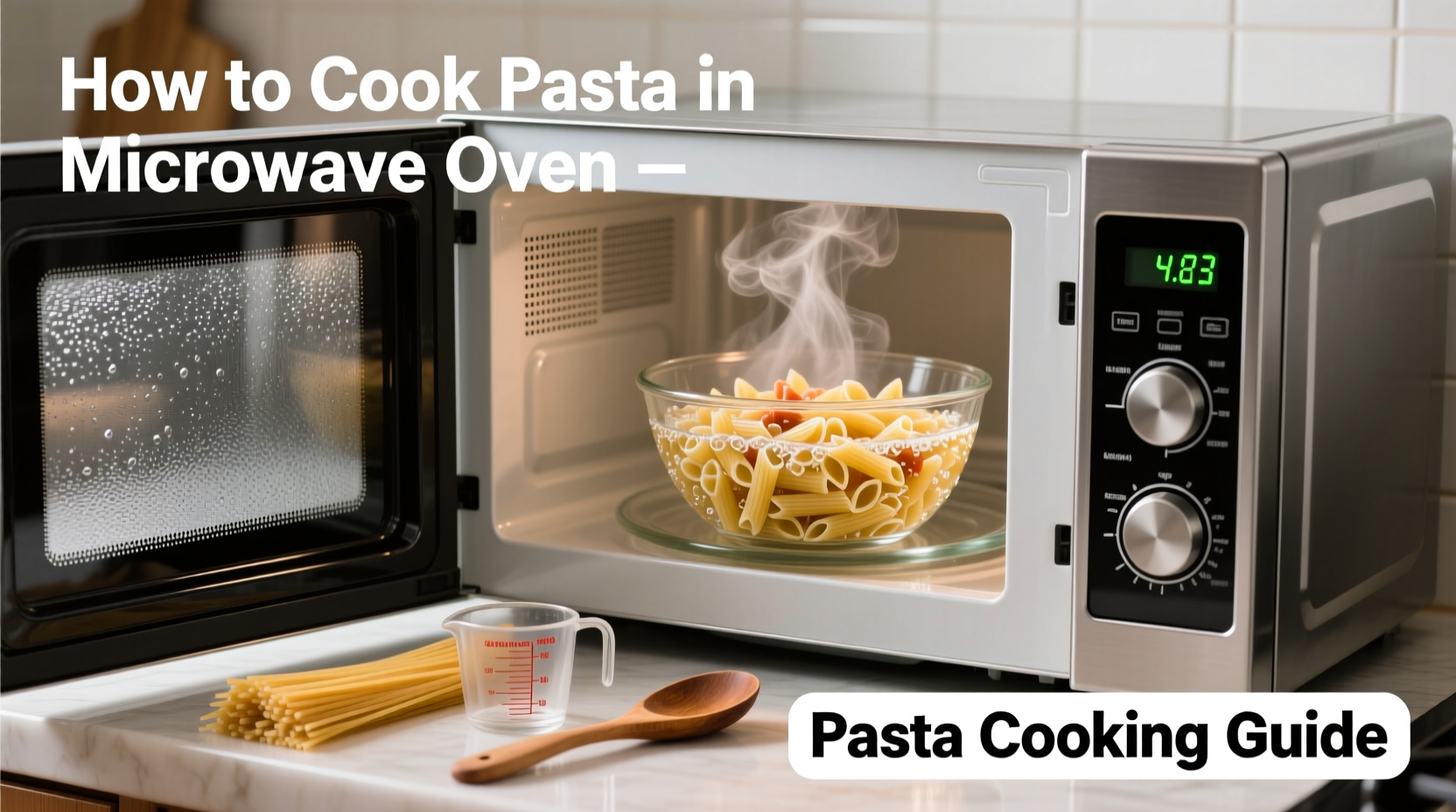Yes, you can cook pasta in a microwave oven in 10-15 minutes using just pasta, water, and a microwave-safe bowl—no stovetop required. This method saves time, energy, and cleanup while delivering perfectly cooked results when following proper water ratios and timing.
The Smart Way to Cook Pasta Without Boiling Water on the Stove
Cooking pasta in a microwave oven isn't just for college students with limited kitchen equipment—it's a legitimate time-saving technique that professional chefs sometimes use for quick meal prep. When executed properly, microwave pasta cooking delivers al dente results comparable to traditional methods while using less energy and creating minimal cleanup. This guide provides the exact measurements, timing, and techniques you need for perfect microwave pasta every time.Why Microwave Pasta Cooking Works
Microwaves cook food through dielectric heating, where water molecules rapidly vibrate to generate heat. Unlike stovetop cooking where heat transfers from the outside in, microwaves heat food more evenly throughout. This difference explains why microwave pasta requires specific water ratios and intermittent cooking intervals.| Cooking Method | Time Required | Water Ratio | Energy Used |
|---|---|---|---|
| Traditional Stovetop | 15-20 minutes | 4-6 quarts per pound | High |
| Microwave Method | 10-12 minutes | 2 cups per 4 oz pasta | 30-50% less |
Equipment You Actually Need
Forget complicated gadgets—microwave pasta requires just three items:- A deep, microwave-safe bowl (at least 2-quart capacity)
- A microwave oven with at least 800 watts power
- A long-handled spoon for stirring

Step-by-Step Microwave Pasta Instructions
Follow these precise steps for perfect results:- Measure precisely: Use 4 ounces (113g) of dry pasta and 2 cups of cold water for a single serving
- Add salt: Include 1 teaspoon of salt to the water (critical for flavor development)
- Microwave uncovered: Cook on high for 5 minutes, then stir thoroughly
- Continue cooking: Microwave another 5-7 minutes, checking every 2 minutes
- Test for doneness: Pasta should be tender with slight resistance (al dente)
- Rest and drain: Let sit 2 minutes, then carefully drain excess water
Avoid These Common Microwave Pasta Mistakes
Many people fail with microwave pasta because they make these critical errors:- Using too little water: Results in gummy, unevenly cooked pasta
- Not stirring midway: Causes uneven cooking and potential boil-overs
- Overcooking: Pasta continues cooking during resting time
- Using low-wattage microwaves: Under 800 watts requires 25% more cooking time
When Microwave Pasta Works Best (and When It Doesn't)
Microwave pasta excels in specific scenarios but has limitations:- Ideal for: Single servings, quick weeknight meals, dorm room cooking
- Works well with: Small pasta shapes (macaroni, penne, orzo)
- Limited success with: Long pasta (spaghetti, fettuccine) requires special arrangement
- Avoid for: Delicate filled pastas (ravioli, tortellini) which may burst
Serving Your Perfect Microwave Pasta
Don't ruin your perfectly cooked microwave pasta with poor finishing:- Immediately toss with sauce while pasta is hot
- Add a splash of reserved cooking water to help sauce adhere
- Finish with grated cheese or fresh herbs for enhanced flavor
- Let rest 1-2 minutes before serving to allow flavors to meld











 浙公网安备
33010002000092号
浙公网安备
33010002000092号 浙B2-20120091-4
浙B2-20120091-4